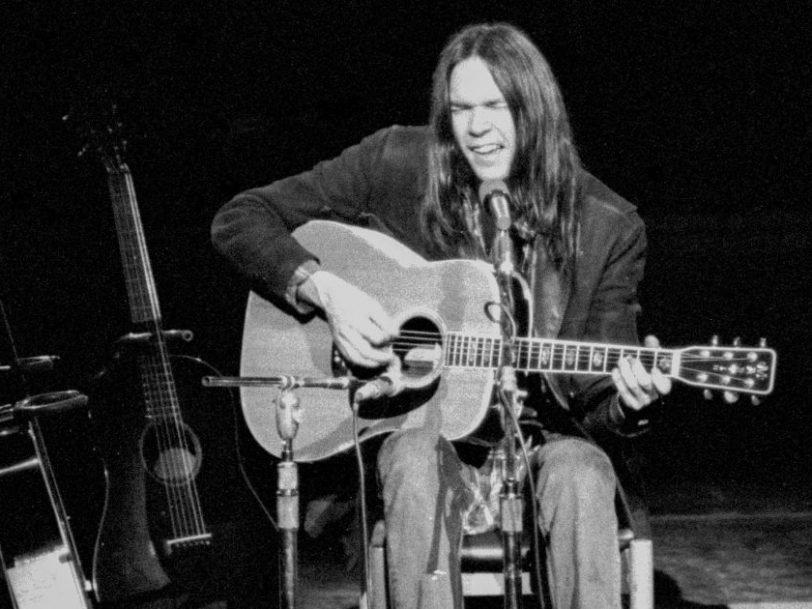Neil Young’s historic concerts at Toronto’s Massey Hall, two sets performed on 19 January 1971, marked a special homecoming for the 25-year-old singer. Young, born in that Canadian city in 1945, was nearing the end of a four-month solo tour called Journey Through The Past, and these live recordings, released over three decades later as Live At Massey Hall 1971, capture the former Buffalo Springfield and Crosby, Stills, Nash And Young musician in his full glory as a one-man band.
Listen to ‘Live At Massey Hall 1971’ here.
Playing solo was a necessity for Young at the time. The singer-songwriter, who had polio as a child, had recently slipped a disc in his back while working in his garden and had temporarily stopped wearing his heavy Les Paul guitar in favour of a lighter acoustic guitar. Young alludes to the injury at the beginning of his rendition of Helpless, when he drops a pick and says “bending over is… not so much fun”. He later admitted: “I couldn’t hold my guitar up. That’s why I sat down on my whole solo tour. I couldn’t move around too well.”
“This is the album that should have come out”
Young was riding high after the release of the brilliant After The Gold Rush album in September 1970, and he and his trusted producer David Briggs decided to record the performances at Massey Hall – a late show was added because the first sold out so quickly – because they recognised that the venue had such superb acoustics. Back in May 1953, the Toronto concert hall had famously been the place where Charlie Parker and Dizzy Gillespie recorded their celebrated evening of bebop jazz.




